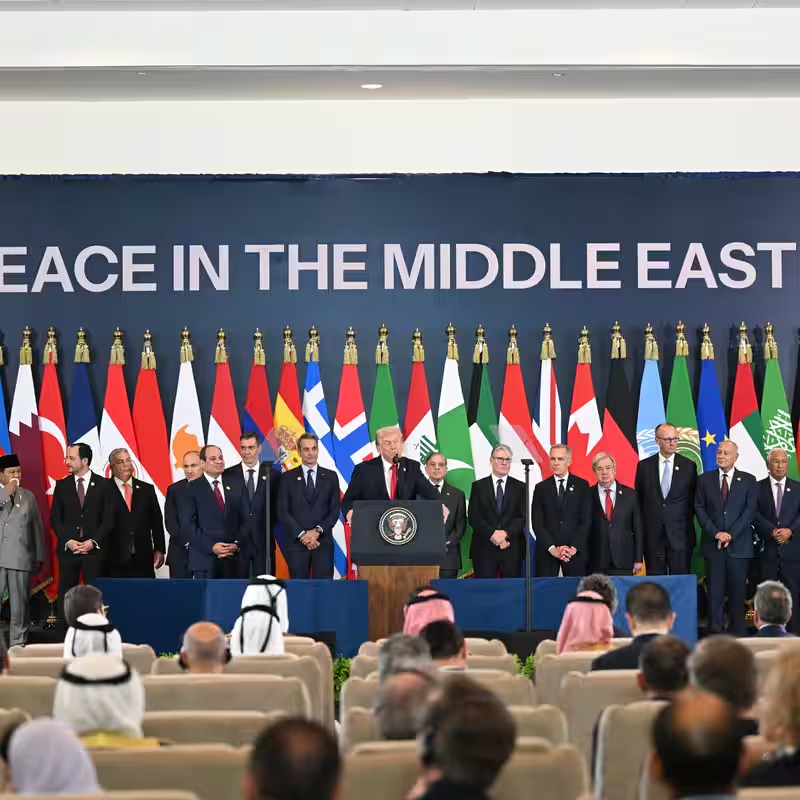Table of Contents
- A Diplomatic Turning Point in Sharm el-Sheikh
- Behind-the-Scenes Pressure That Made the Deal Possible
- What the Gaza Ceasefire Deal Actually Says
- Why This Time Was Different
- What Happens Next?
- Sources
A Diplomatic Turning Point in Sharm el-Sheikh
In the early hours of October 9, 2025, after nearly two years of relentless war in Gaza, a breakthrough emerged from the sun-drenched resort town of Sharm el-Sheikh, Egypt. For the first time, Hamas signaled it was ready to release all Israeli hostages—without demanding a full Israeli military withdrawal. In return, Israel agreed to free thousands of Palestinian prisoners, including 250 serving life sentences.
The Gaza ceasefire deal, brokered by an unlikely coalition of U.S. envoys and Arab mediators, marks a pivotal moment in one of the region’s bloodiest conflicts. And at the center of it all? Former President Donald Trump, whose personal intervention—including three direct calls to negotiators—reportedly tipped the scales.
Behind-the-Scenes Pressure That Made the Deal Possible
According to 15 officials briefed on the talks (who spoke on condition of anonymity), the breakthrough came after intense pressure on both sides:
- Hamas was weakened by two years of Israeli military operations and growing isolation—even from traditional backers like Turkey.
- Israel, under Prime Minister Benjamin Netanyahu, faced rare but firm nudging from Trump, who warned that non-cooperation could jeopardize U.S. support.
- Qatar and Egypt played critical mediating roles, with Qatar’s prime minister slipping a handwritten note to U.S. envoys urging them to push Israel toward compromise.
Jared Kushner and Steve Witkoff—Trump’s Middle East point men—arrived in Egypt on October 8 with a clear mandate: get a deal done. And by midnight, after hours of tense back-and-forth, Hamas’s lead negotiator Khalil al-Hayya gave the green light.
What the Gaza Ceasefire Deal Actually Says
While full details remain under wraps, key provisions include:
| Component | Israeli Commitment | Hamas Commitment |
|---|---|---|
| Hostages/Prisoners | Release of ~5,000 Palestinian prisoners, including 250 lifers | Release of all remaining Israeli hostages |
| Military Presence | Partial withdrawal from built-up Gaza areas; retain control over roughly half the territory | Accept Israeli buffer zones; forgo demand for total withdrawal |
| Future Talks | Post-war governance discussions deferred | Disarmament not addressed in this phase |
Notably, the agreement sidesteps thornier long-term issues like Hamas’s disarmament or Gaza’s political future—deliberately focusing only on what was immediately achievable.
Why This Time Was Different
Past ceasefire attempts collapsed because neither side had real authority to negotiate. This time, both delegations came with mandates:
- Netanyahu empowered Ron Dermer, Israel’s lead negotiator, to make concessions.
- Hamas’s leadership, battered but still intact, saw holding hostages as a growing liability—not leverage.
“They were almost looking at the hostages less as an asset and more as a liability,” Witkoff told officials, reflecting a major strategic shift by the militant group.
Trump’s embrace of a partial Hamas statement on October 3—despite its incompleteness—also signaled U.S. seriousness. Combined with the fallout from Israel’s botched strike in Qatar, the moment created rare diplomatic momentum.
What Happens Next?
Implementation remains the true test. Unresolved issues—like the exact list of prisoners to be released—could still spark delays. But mediators believe these are manageable.
At 1 a.m. local time, as the deal was finalized, Trump joined the room via speakerphone. “It’s a big day,” he declared—a phrase that may soon echo through history books.
If sustained, this ceasefire could mark the beginning of the end of the longest-running Israeli-Palestinian war in decades.
Sources
‘A Big Day’: How the U.S. and the Arab World Teamed Up to Seal the Gaza Deal – The New York Times




